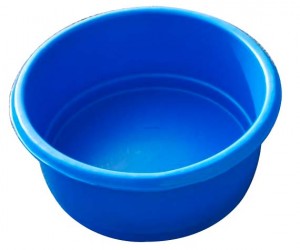Here are 5 rough-and-ready tips on the best way to “catch your koi’s best side” if you want to track its development, are submitting it for a show or are just going to share it for some good ol’ fashioned bragging rights.
Camera Settings
- A DSLR (Digital Single-Lens Reflex) camera will take better photos than a “Point-and-Shoot” camera.
- ISO—this is your camera’s overall sensitivity to light—should be set high enough to allow you to shoot at a shutter speed of at least 1/250 while still obtaining a medium depth of field.
- The ISO you choose will depend on the amount of light you have to work with.
- Here is a quick tutorial to explain the how ISO, shutter speed and aperture all work together.
 Positioning
Positioning
- Photograph the fish from directly over top of and just in front of the nose, looking down the dorsal line to the tail.
- Pay close attention to your positioning to make sure you are not showing more/less of the right/left side.
- Fins should be fully out to the side and symmetrical.
Lighting
- Built-in camera flashes produce glare on the water and will startle your fish. Use continuous external lighting instead.
- You don’t have to rush out and get specialized photographic lighting. You can use your household lamps or anything that you have around.
- Position the lights to your left and right, pointed at the bowl in the same direction you are looking. It helps to prevent glare on the top of the water.
- Learn to use the white balance controls on your camera to get the color right. Try this tutorial as a jumping off point.
Bowls
 This can and will make a difference.
This can and will make a difference.- If you are serious about wanting to photograph for a show, then buy a blue show bowl. There are numerous outlets for them, so do a little research.
- You can also create your own bowl by spray painting a container blue with plastic bonding spray from hardware store.
Water
- Always understated. Using new water (non-pond water) is best as pond water can have debris in it.
- Make sure that water is similar temp and pH to pond water and has adequate oxygen.
- The cooler the water, the less active your fish will be and the easier it will be to get a good photo.
Best of luck snapping your koi! Join us on Facebook (NextDayKoi) and send us a pic of your faves.


Please warn people that too much clove oil will kill their fish.
It’s used to euthanize terminally sick fish!